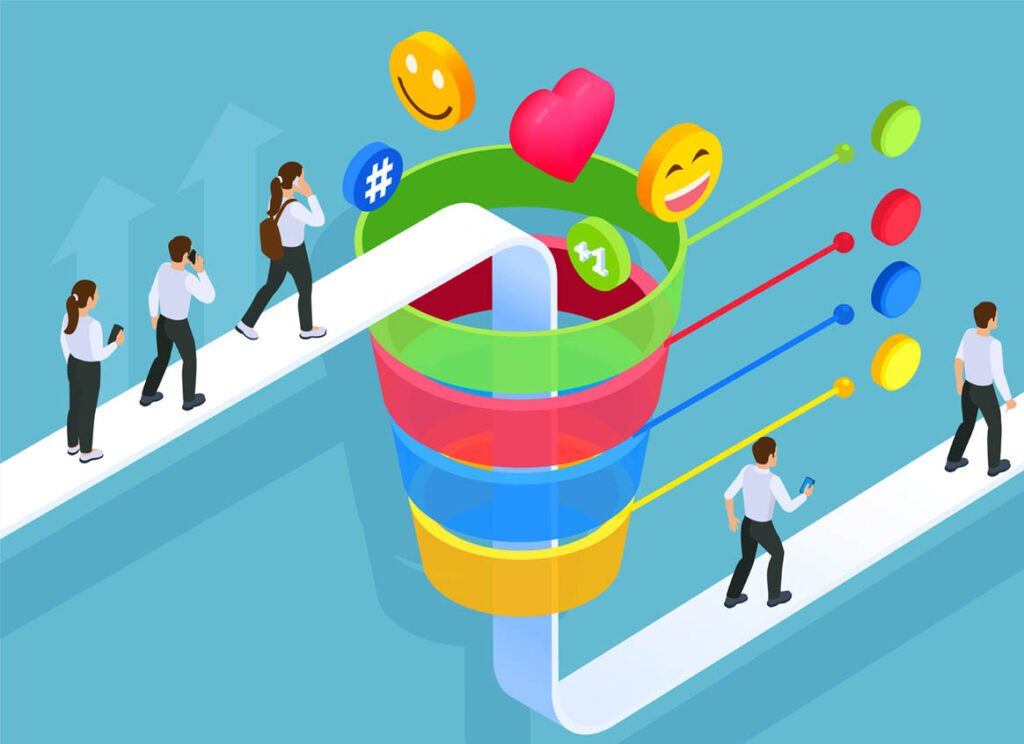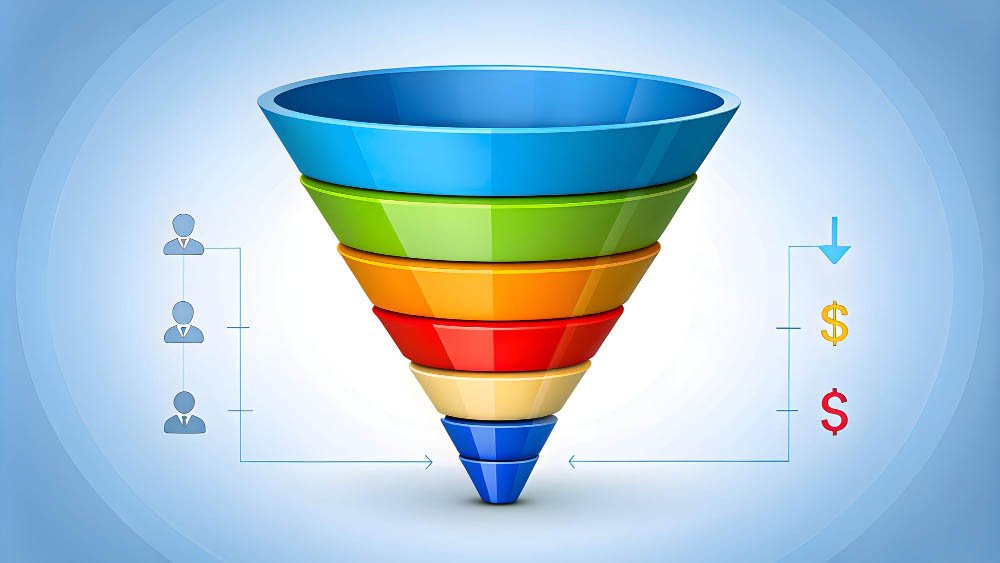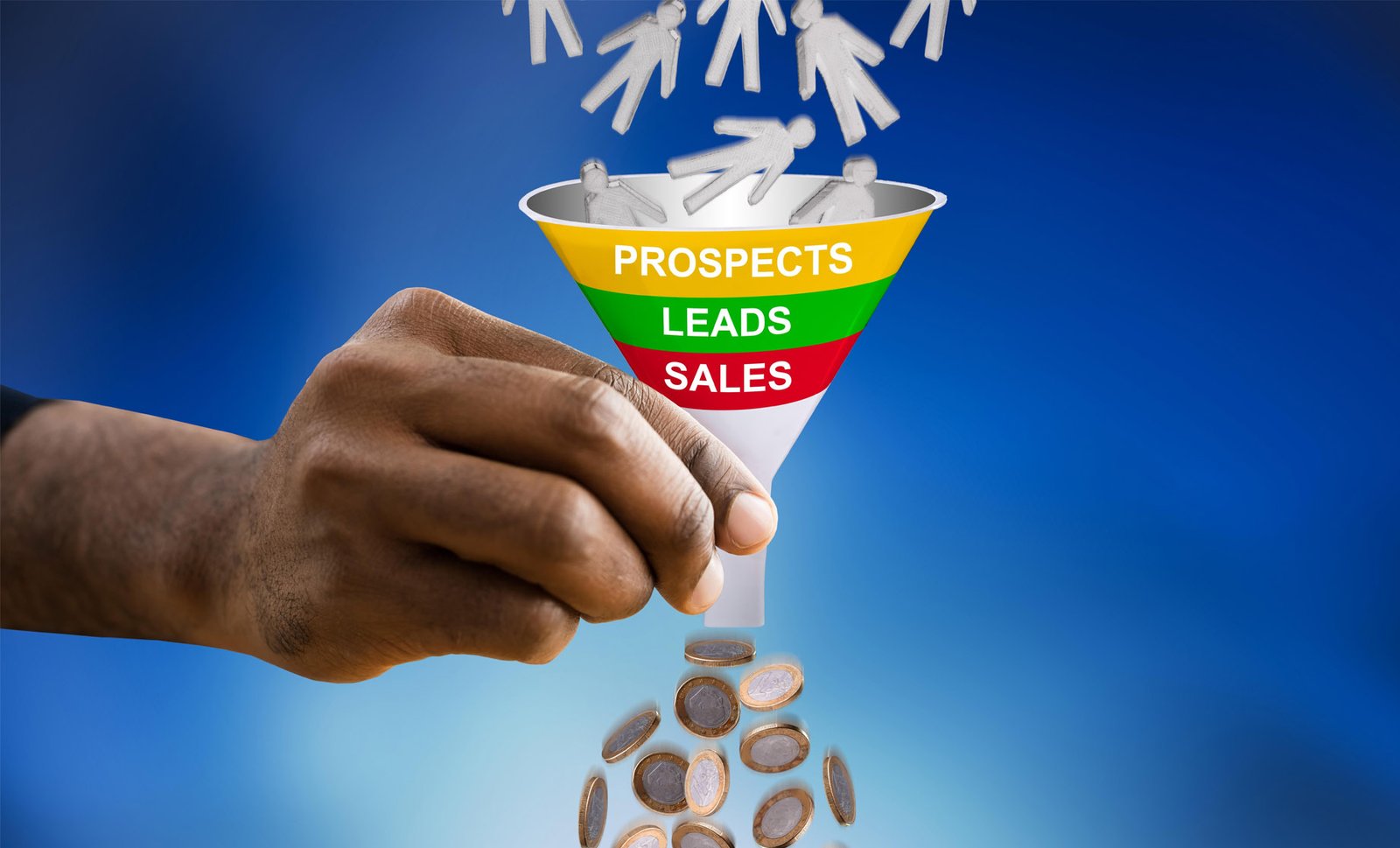“A sales funnel isn’t just a tool-it’s the backbone of turning prospects into loyal customers.” Ever wondered why some businesses seem to effortlessly attract and convert customers while others struggle to get noticed?
The secret often lies in a well-crafted sales funnel. Welcome to a deep dive into building high-converting funnels, drawing from real-world insights and the latest strategies for 2025. If you’re a startup founder, a small busin ess owner, or a seasoned marketer, this guide will equip you with actionable steps to transform your customer journey.
Let’s explore how to guide prospects from curiosity to commitment with precision and efficiency. My goal is to break down complex ideas into clear, practical lessons so you can apply them directly to your business.
Understanding the Core of a Sales Funnel
Let’s start with the basics. A sales funnel represents the journey your potential customers take-from the moment they first hear about your brand to the point where they make a purchase and beyond. Essentially, it’s a structured path designed to nurture leads and maximize conversions. By grasping this concept, you can pinpoint where prospects drop off and address those gaps effectively.
Moreover, it’s vital to recognize that a funnel isn’t a one-size-fits-all solution. Each business has unique needs and audiences. Therefore, tailoring your funnel to align with your specific goals and customer behaviors becomes a priority. In 2025, with digital landscapes evolving rapidly, staying adaptable is key to maintaining relevance.
On another note, consider the psychological aspect. A funnel works best when it taps into customer motivations at every stage. Be it curiosity at the top or trust at the bottom, understanding these drivers helps craft compelling touchpoints. This approach ensures that your community engagement and efforts resonate deeply with your audience.

Mapping Out the Stages for Maximum Impact
Now that we’ve covered the essence, let’s break down the critical stages of a high-converting funnel. Each phase plays a distinct role in guiding prospects closer to a decision. By focusing on these steps, you can create a seamless flow that minimizes friction and boosts results.
Attracting the Right Traffic at the Top
First and foremost, it’s essential to draw in an audience that’s genuinely interested in what you offer. Without the right traffic, even the best funnel will falter. In 2025, targeted digital marketing remains a cornerstone for success. Focus on channels where your ideal customers spend their time, whether it’s social media platforms or search engines.
Additionally, content is your ally at this stage. Crafting valuable blog posts or engaging videos can position your brand as a helpful resource. By addressing pain points or answering key questions, you establish early credibility. Keep in mind that the goal here isn’t to sell immediately but to spark interest and curiosity.
Capturing Leads with Effective Tools
Once you’ve attracted attention, the next step is to convert visitors into leads. This is where lead capture mechanisms come into play. Offering something of value, like a free guide or a webinar, in exchange for contact information works wonders. Make sure your opt-in forms are simple and strategically placed.
Furthermore, personalization can elevate your efforts. Tailor your offers based on user behavior or demographics to increase relevance. For instance, a visitor from a specific industry might appreciate a tailored eBook. This targeted approach significantly enhances your conversion rates at this early stage.
Nurturing Leads to Build Trust
Having captured leads, the journey doesn’t stop there. In fact, this is where many businesses lose momentum. Nurturing is about building trust and relationships over time. Let’s explore how to keep prospects engaged as they move deeper into your funnel.
Personalized Communication for Stronger Bonds
To begin with, personalized outreach is a powerful tool. Use email marketing campaigns to send relevant messages based on user preferences or past interactions. This shows that you understand their needs, fostering a sense of connection. In 2025, tools like AI-driven CRMs make this level of customization more accessible than ever.
Besides, consistency matters. Regular follow-ups, without being intrusive, keep your brand top-of-mind. Share useful tips or industry updates to add value. By doing so, you position yourself as a reliable partner rather than just another business vying for attention. This builds a foundation of customer trust.
Addressing Pain Points with Solutions
Equally important is addressing specific concerns or hesitations. Dive into the challenges your leads face and offer clear solutions through your content or direct communication. For example, case studies showcasing how you’ve helped similar clients can be incredibly persuasive. Highlighting these success stories reassures prospects of your expertise.
On top of that, ensure your messaging evolves with the lead’s journey. Early-stage leads might need educational content, while those closer to a decision may benefit from product comparisons or demos. Adapting your approach based on their position in the funnel maximizes engagement effectiveness.

Converting Leads into Paying Customers
At this point, your leads are warmed up and ready for the next step. Conversion is the pivotal moment where interest turns into action. Let’s unpack how to make this transition as smooth as possible in today’s fast-paced digital environment.
Crafting Irresistible Offers
First off, your offer needs to stand out. Create compelling value propositions that address specific needs or desires. Limited-time discounts or exclusive bonuses can create urgency, nudging hesitant prospects to act. In 2025, leveraging scarcity tactics remains a potent strategy for driving decisions.
Moreover, clarity is non-negotiable. Ensure your call-to-action (CTA) is straightforward and prominent. Whether it’s a “Buy Now” button or a free trial sign-up, remove any ambiguity. A streamlined process reduces friction and boosts your conversion potential significantly.
Optimizing the Checkout Experience
Another key aspect is the purchasing process itself. A complicated or lengthy checkout can lead to cart abandonment, a common issue even today. Simplify every step, from form fields to payment options. In 2025, integrating mobile-friendly payment systems is crucial given the rise in mobile transactions.
Additionally, build trust at this final stage. Display security badges, customer reviews, or money-back guarantees near the checkout. These elements reassure buyers and minimize last-minute doubts. A seamless, trustworthy experience can dramatically improve your sales completion rates.
Retaining Customers for Long-Term Growth
Securing a sale is a victory, but the journey doesn’t end there. Retention is where sustainable growth truly happens. Loyal customers not only return but also become advocates for your brand. Let’s explore how to keep them engaged.
Delivering Exceptional Post-Purchase Support
To start with, post-purchase support sets the tone for future interactions. Offer prompt, helpful customer service to address any issues or questions. In 2025, AI-powered chatbots can provide instant responses, enhancing the user experience. Showing that you care after the sale builds lasting customer loyalty.
Beyond that, follow up with personalized thank-you messages or surveys to gather feedback. This not only shows appreciation but also provides insights for improvement. Small gestures like these can turn a one-time buyer into a repeat customer, strengthening your brand relationship.
Building Loyalty Through Added Value
Equally significant is providing ongoing value. Implement loyalty programs that reward repeat purchases with discounts or exclusive perks. Additionally, share useful content or updates that keep customers connected to your brand. For instance, a monthly newsletter with tips or industry news can maintain engagement.
What’s more, encourage referrals by offering incentives for bringing in new customers. Word-of-mouth remains a powerful tool, especially in local markets like North Carolina. By fostering a sense of community and reward, you create brand advocates who amplify your reach organically.
Continuous Optimization for Sustained Success
Lastly, a high-converting funnel isn’t a set-it-and-forget-it system. It requires constant refinement to stay effective. With digital trends evolving rapidly in 2025, staying ahead means embracing a mindset of continuous improvement.
Tracking Metrics for Actionable Insights
Initially, focus on tracking key metrics to understand your funnel’s performance. Look at conversion rates at each stage, drop-off points, and customer acquisition costs. Tools like Google Analytics or CRM platforms provide detailed data to guide your decisions. Identifying weak spots allows for targeted improvements.
In addition, don’t overlook qualitative feedback. Customer surveys or direct conversations can reveal pain points that numbers might miss. Combining these insights with hard data creates a comprehensive view of your funnel’s health, enabling smarter optimization decisions.
Testing and Iterating for Better Results
On another front, testing is your ally. Experiment with different CTAs, landing page designs, or email subject lines to see what resonates best. A/B testing remains a cornerstone of funnel optimization in 2025, helping you refine every element based on real user responses.
Furthermore, stay updated on emerging tools and trends. For instance, AI-driven personalization is becoming more accessible, allowing for hyper-targeted campaigns. By iterating based on test results and new technologies, you ensure your funnel remains a high-performing asset over time.

